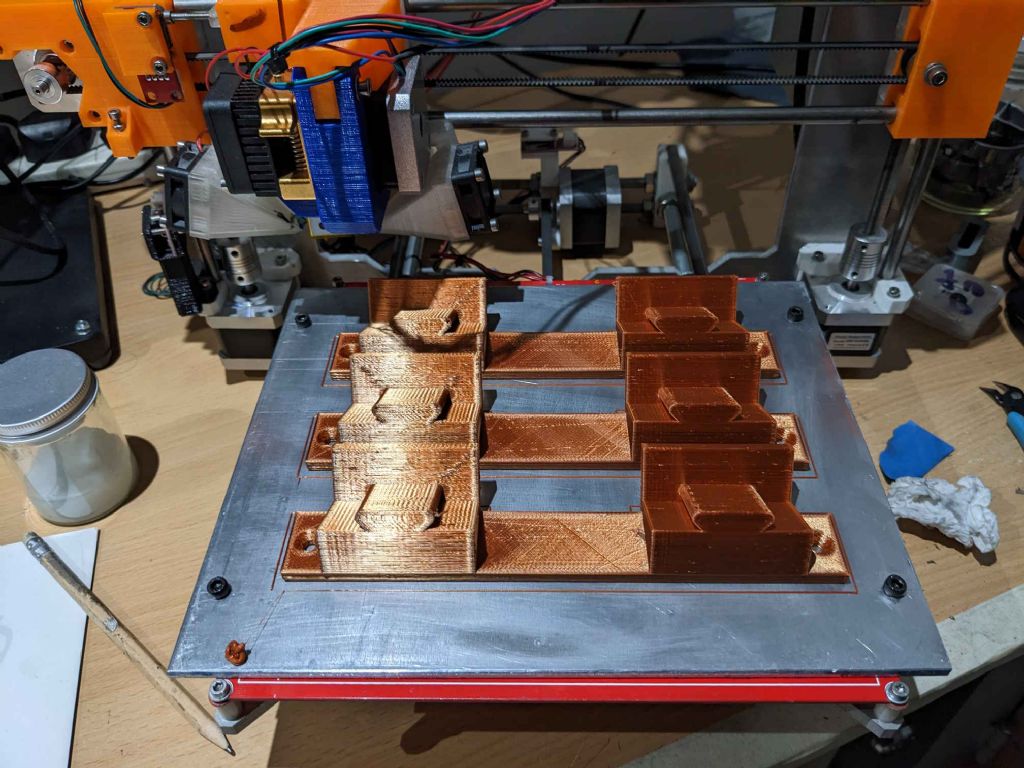Posted by Keith Bloor on 11/02/2023 16:15:38:
A message to Jelly please. I like where you have put your heater, thinking of doing a similar setup. Where did you get the ducting and outlets from?. I presume they are 75mm.
I ordered with Duct Store who were cheap, fast and good.
My setup is 80mm (nearest to 75 in spiral ducting), and works fine.
I would consider using an adapter as close as possible to the heater and running 100mm or 125mm as the pressure drop from the narrow ducting does seem to have an impact on the volume of air moved at lower power levels (although obviously bigger ducts does reduce flow velocity, so would reduce the "throw" of the supply valves).
It's worth noting that if you buy their push fit connectors with rubber seals on (very hand to not need to use sealant), the first few runs at full power will result in a really unpleasant synthetic rubber smell, which goes away, but appears to be years of low-level off-gassing accelerated into to a couple of hours.
My other suggestion would be to duct the air intake of the heater to draw air from floor level, to encourage mixing.
The current setup heats the room to a very comfortable temperature from waist height up, but doesn't have the oomph to push warm air down to floor level.
The alternative solution would be to use an in-line fan (probably a cheap mixed flow fan) to increase the velocity in the duct enough to reach floor level but it would take some careful setting of the speed controller to prevent it pulling too much air through the heater reducing it's effectiveness.
Also, worth knowing is that you can cut the hose barbs off the heater and pump fuel connections with a hacksaw, file the burr down and then use suitable brass compression fittings (5mm on the pump, 4mm on the heater) and microbore copper tube to run the fuel line.
I got those from BES.
Because I had ¼" microbore to hand I used 4mm/5mm compression to ⅛ BSP fittings joined to ¼" compression to ⅛ BSP fittings with a ⅛ BSP female × female pipe nipples; each assembly only cost a few quid and it's a lot more secure than plastic piping; I would expect you'd need to do that to make up the 4mm connector on the heater at least, which does allow you to use a 90° elbow fitting for neatness.
My fuel tank is outside and comes in via a ⅝" bulkhead fitting (with ¼" × ¼" compression connectors) attached to a metal plate which is screwed over a 32mm hole in the wall (to allow me to get a spanner in to access the compression fitting in the future if needed).
The pump and power supply are in a steel enclosure too for neatness and protection.
I can add pictures of my fuel and power setup later if you're interested, will just have to find them, though the ones I have are a bit messy as I took them before I replaced the stock wiring looms with a dedicated 7-core automotive cable and grouped all the wires at the heater end into one superseal connector…
Which is also a good upgrade as it turns out.
Edited By Jelly on 11/02/2023 18:37:03
Matt T.






